Day 3 — Friday, Nov. 22
All times are Eastern Standard Time. 6.73 CRCE available.
Display Preferences
Hide/Show
8:30 a.m.–9:00 a.m. | Room 224C | General
Education Section Meeting
Jennifer Anderson, EdD, RRT, RRT-NPS, FAARC
Show description
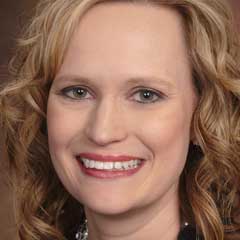
Section members meet to determine their needs and priorities, as well as how to use AARC resources to accomplish them. All Congress attendees, including section nonmembers, are invited to attend and participate.
8:30 a.m.–9:00 a.m. | Ballroom WF3 | General
Neonatal–Pediatrics Section Meeting
Emilee Lamorena, MSc, RRT, RRT-NPS
Show description

Section members meet to determine their needs and priorities, as well as how to use AARC resources to accomplish them. All Congress attendees, including section nonmembers, are invited to attend and participate.
8:30 a.m.–9:00 a.m. | Room 224A | General
Sleep Section Meeting
Amanda Leightner, PhD, RRT, RRT-SDS, RPSGT, RST, CCSH, FAARC
Show description

Section members meet to determine their needs and priorities, as well as how to use AARC resources to accomplish them. All Congress attendees, including section nonmembers, are invited to attend and participate.
9:10 a.m.–12:00 p.m.
Symposium
Clinical Management of ARDS
9:10 a.m.–9:45 a.m. | Ballroom WF4 | Adult Acute Care
Assessing Lung Recruitment Potential at the Bedside Using the R/I Ratio
Thomas Piraino, RRT, FCSRT, FAARC
Show description

The benefits of higher PEEP remain uncertain for patients with ARDS. A possible concern with the use of higher PEEP is the recruitment potential of the patient. This session will discuss various methods for assessing recruitment potential at the bedside, focusing on the recruitment-to-inflation ratio (R/I ratio), including the benefits and limitations of the technique.
9:55 a.m.–10:30 a.m. | Ballroom WF4 | Adult Acute Care
Controlling Respiratory Effort for Safe Ventilation in ARDS
Ewan Goligher, MD, PhD
Show description

Individuals suffering from ARDS often exhibit increased respiratory drive. Utilizing sedation and paralysis may result in diaphragm disuse atrophy, whereas excessive respiratory effort can cause diaphragm injury and contribute to further lung damage. This lecture will discuss methods for controlling respiratory effort for safe ventilation during ARDS.
10:40 a.m.–11:15 a.m. | Ballroom WF4 | Adult Acute Care
Is Reverse Triggering a Major Concern with ARDS Patients?
L. Felipe Damiani, PT, PhD
Show description
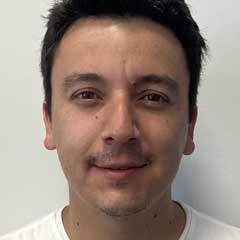
Reverse triggering is a newly described type of patient-ventilator interaction in which respiratory muscle contractions occur after a passive mechanical insufflation. This lecture will discuss the clinical implications and potential impact of reverse triggering on lung and diaphragm injury.
11:25 a.m.–12:00 p.m. | Ballroom WF4 | Adult Acute Care
When to Consider VV-ECMO for ARDS Management
Sara Mirza, MD, MS
Show description

VV-ECMO is a crucial intervention for treating ARDS patients, yet it is seldom considered a first-line therapy. This lecture provides an extensive review of the criteria for employing VV-ECMO, including indications for use, selection of appropriate patients, and its influence on patient outcomes.
9:10 a.m.–9:45 a.m. | Room 224C | Clinical Practice
Adding Value in Post Acute Respiratory Care
Timothy Buckley, MSc, RRT, FAARC
Show description

This presentation will highlight the various roles RT can play in the post-acute environment. RTs currently work in acute rehabilitation hospitals, long term acute care hospitals, skilled nursing facilities, home care and other settings. In each of these care settings the RT can play a unique role and add value to the overall care provided. RTs are the experts in providing safe and effective care, education and assessment in these environments. This value-added care improves patient outcomes, decreases costs and prevents untimely readmissions.
9:10 a.m.–9:45 a.m. | Room 240B | Diagnostics
Spirometry and Beyond
Ariel Berlinski, MD, FAAP, FAARC, ATSF
Show description
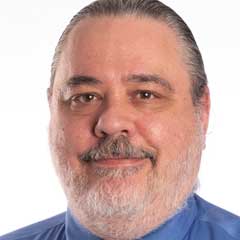
Spirometry is used to monitor many respiratory conditions. The value of the test is heavily dependent on its quality. Spirometry is typically done in person and coached by a respiratory therapist. Geography and weather-related conditions can make it difficult for patients to attend in-person visits. This presentation will review how the use of telemedicine and home spirometers can help overcome these limitations.
9:10 a.m.–9:45 a.m.
Symposium
New Professionals
9:10 a.m.–10:30 a.m. | Expo Hall Theater | Education
Success on the Therapist Multiple Choice Examination
William Galvin, MSEd, RRT, CPFT, AE-C, FAARC
Show description
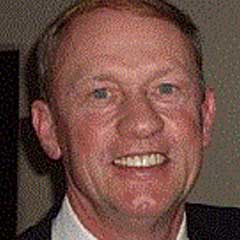
The presentation will address the factors that make for success in the examination process. It will cover preparatory issues and what you will experience onsite as well as test-taking strategies and techniques. Emphasis will be placed on the new Therapist Multiple-Choice examination (TMC).
9:55 a.m.–10:30 a.m. | Expo Hall Theater | Education
Success on the Clinical Simulation Examination
William Galvin, MSEd, RRT, CPFT, AE-C, FAARC
Show description

This presentation will serve as a sequel to the previous one and will address the factors that make for success on the Clinical Simulation Examination. It will cover such issues as exam content, structure, and unique strategies for progressing through a branching logic type of exam.
9:10 a.m.–9:45 a.m. | Ballroom WF3 | Neonatal/Pediatrics
iNO for PARDS: What does the Data Really Show?
CON: Ira Cheifetz, MD, FAARC
PRO: Alex Rotta, MD
Show description
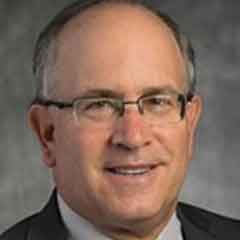

Use of inhaled nitric oxide for pediatric acute respiratory syndrome (PARDS) varies between institutions and clinicians. Definitive data is lacking, and interpretation of the available medical literature is inconsistent. In this presentation, two experts in the field of PARDS will actively debate the potential benefits and risks of iNO administration for PARDS. Ample time will be provided to further explore this controversy through an open discussion with the audience.
9:10 a.m.–9:45 a.m. | Room 224A | Sleep Medicine
Impact of Sleep on Chronic Lung Disease
Ashley Barry, MPH, RRT
Show description
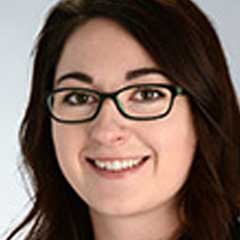
Poor sleep is associated with decreased quality of life and increased frequency of exacerbations in pulmonary disease. Despite its modifiable nature, sleep is infrequently evaluated to improve pulmonary health. This session will discuss the role that sleep plays in the regulation of the inflammatory cascade and its downstream impact on chronic lung disease. An overview of sleep as a modifiable target for chronic disease management will be discussed.
9:10 a.m.–11:10 a.m. | Location TBA | General
Open Forum Editors’ Choice
Show description
- Delivery of Continuous Albuterol During Emergency Medical Services Transport — Michael Davis, Little Rock, AR
- Impact of Ventilator Settings, Nebulizer Placement, Bias Flow, Humidification, and Circuit Adaptor on Aerosol Delivery During Invasive Ventilation — Fai Ali Albuainain, Chicago, IL
- The Impact of Skin Pigment on Measurement of Noninvasive Hemoglobin — Dina Gomaa, Cincinnati, OH
- Identifying Patients at Risk for Unplanned Extubation in a Pediatric Intensive Care Unit — Cheryl Dominick, Middletown, DE
- Preliminary Outcomes of High-Risk Opioid, Post-Operative, Orthopedic Patient Home Monitoring: The Impact of Alarm Limit Settings and Audible Alarm Delays — Kim Bennion, Eagle Mountain, UT
- Effects of Spirometry Race-Neutral Values in a Pediatric Hospital System — Jamie Markham, Wilmington, DE
- Preventing Endotracheal Tube Device-Related Pressure Injuries: A Practice-Based Approach — Sarah J Bazelak, Milwaukee, WI
- Administration of Surfactant via Supraglottic Airway — Carolyn J. LaVita, Boston, MA
Supported by an unrestricted educational grant from
9:55 a.m.–10:30 a.m. | Room 224C | Clinical Practice
The Difficult Towan Patient: Speaking Valve Importance and Effective Use
Samuel Hammerman, MD, MMM
Show description

Many patients with acute respiratory failure progress to chronic respiratory failure. During this process, placement of a tracheostomy tube is often required to help facilitate the weaning process from mechanical ventilation. As part of this process, tracheostomy decannulation is necessary. Speaking valves are often not included in this process. Speaking valve use has been shown to facilitate weaning, reduce decannulation time, improve swallowing function, reduce aspiration, and improve mobility and quality of life. This session will discuss an evidence-based approach to the use of speaking valves in a patient who has a tracheostomy.
9:55 a.m.-10:30 a.m. | Room 240B | Diagnostics
A Look Inside: Assessing Lung Function with Radiology
Sara Mirza, MD, MS
Show description

The first thing that comes to mind today when you hear “pulmonary diagnostics” is likely body boxes and telling people to “keep blowing.” However, even current radiologic technology can add context and insight to traditional measurements. This session will cover the current state of using CT scans and other imaging techniques to assess lung function, including evidence to support its use. Attendees will then look into the future of imaging and learn about disruptive new innovations in the way that may reduce our current reliance on technique and coaching to give a more accurate look at someone’s lungs.
9:55 a.m.–10:30 a.m. | Ballroom WF3 | Neonatal/Pediatrics
Development of a Non-Invasive Failure Risk Score
Natalie Napolitano, PhD, RRT, RRT-NPS, FAARC
Show description

The successful use of NIV in children is complicated by patient compliance and interface fit, among other factors. Determining NIV failure is multifactorial, resulting in prolonged use of NIV in the intensive care unit. The development of a novel NIV failure risk score may allow us to make an objective decision on whether to intubate or not.
9:55 a.m.–10:30 a.m. | Room 224A | Sleep Medicine
Metabolism and Sleep Disorders: Impact of Metabolism on Sleep
Jessica Schweller, MS, APRN-CNP, RRT-SDS, CCSH, AE-C
Show description

During sleep, metabolic changes occur to allow for a restful sleep. Sleep disorders can alter such metabolic changes leading to obesity, cardiovascular disease, and other comorbid conditions. Recent advancements in metabolic control of disorders (such as diabetes) can possibly affect underlying sleep disorders. This session will review those metabolic changes that occur with sleep (and sleep disorders) and review the current state of the art regarding the use of GLP-1 agonists for diabetes and weight management and their potential impact on sleep disordered breathing.
10:40 a.m.–11:15 a.m. | Room 224C | Clinical Practice
The Role of the Respiratory Therapist in Long Term Acute Care
Christina Stevens, BS, RRT, RRT-ACCS
Show description

Long-term acute care (LTAC) is an option for many patients following their acute care stays. The respiratory therapist plays a vital role in the management of patients in such centers. This includes management of patients with a variety of chronic lung diseases, including the management of mechanical ventilation, interdisciplinary team collaboration, patient education, and quality improvement initiatives participation. This session will focus on the unique roles of the RT in LTAC setting.
10:40 a.m.–11:15 a.m.
Symposium
Sound Insights: Ultrasound for Diaphragm and Lung Assessment
10:40 a.m.–11:15 a.m. | Room 240B | Diagnostics
Ultrasound Assessment of Lungs in Adult Acute Care
Tyler Weiss, MSc, RRT, RRT-ACCS, AE-C, FCCP
Show description
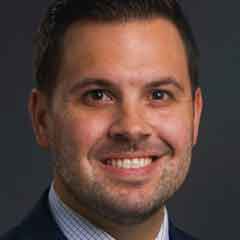
Lung ultrasound is a versatile modality that respiratory therapists can employ to enhance the detection of cardiopulmonary anomalies. Its use may prompt the implementation of suitable therapeutic strategies and enable efficient evaluation of therapeutic responses. This presentation will explore the fundamental aspects of ultrasound technology, with a particular emphasis on pleural and lung ultrasound. It will provide an overview of the anatomical structures discernible via ultrasound, a discussion of common ultrasound artifacts and their origins, and instructions on the bedside utilization of this technology for optimized patient care.
11:25 a.m.–12:00 p.m. | Room 240B | Diagnostics
Ultrasound Assessment of Diaphragm Function and Dysfunction
Ewan Goligher, MD, PhD
Show description

During this lecture; discover the power of ultrasound in assessing diaphragm function and dysfunction. Noninvasive techniques for visualizing diaphragm activity, including the zone of apposition and subcostal anterior approaches, and their clinical relevance will be described. This session will also highlight the detection of diaphragmatic changes during mechanical ventilation and offer guidance on interpreting ultrasound findings for diagnosing diaphragm dysfunction.
10:40 a.m.–11:15 a.m. | Ballroom WF3 | Neonatal/Pediatrics
POCUS in the PICU: What the RT Needs to Know!
Luke Burton, MD
Show description

Point-of-Care Ultrasound (POCUS) is gaining popularity in pediatric critical care to optimize patient assessment and clinical management. POCUS can be utilized across an array of applications including evaluation of the airway, lungs, and diaphragm. Indications for POCUS will be discussed, as well as strategies to integrate POCUS into clinical practice in the PICU.
10:40 a.m.–11:15 a.m. | Room 224A | Sleep Medicine
Inpatient Sleep Screening: Waking Up to An Important Opportunity
Andrew Klein, MS, RRT-ACCS, FCCP
Show description

Obstructive sleep apnea and other forms of sleep disordered breathing are becoming more common and are still underdiagnosed. Early recognition and diagnosis of sleep disorders can have a big impact on minimizing more serious health issues. Patients in the hospital present an opportunity to begin the diagnostic process, even while they are being treated for unrelated clinical problems. Respiratory therapists can have a key role in helping to screen and diagnose at risk patients. This lecture will explore the clinical and financial benefits of having sleep screening available in your facility. Steps to start or improve an existing program will also be discussed.
11:25 a.m.–12:00 p.m. | Room 224C | Clinical Practice
Accreditation for LTC Ventilator Sites — Moving the Needle on Patient Safety
Gene Gantt, RRT, FAARC
Show description
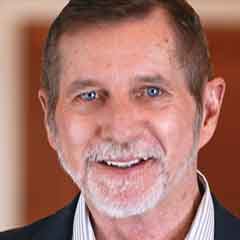
Long-term care ventilator facilities provide specialized care for people with chronic respiratory needs. Current standards of care vary from state to state. The development of accreditation standards for the delivery of care for patients in such care settings should be considered. This session will provide the basis for such a development.
11:25 a.m.–12:00 p.m. | Ballroom WF3 | Neonatal/Pediatrics
Volume-Targeted Modes of Mechanical Ventilation in Neonates
Carolyn La Vita, RRT, RRT-ACCS, RRT-NPS
Show description

Utilization of tidal volume-targeted modalities of ventilation have been well documented in adult critically ill patients. In recent years, volume-targeted ventilation has become more prevalent in neonatal intensive care. Theory of application in neonates, evidence surrounding its use, as well as considerations respiratory therapists must be aware of when using volume-targeted ventilation in this unique population will be discussed.
11:25 a.m.–12:00 p.m. | Room 224A | Sleep Medicine
Enhancing CPAP Adherence with Motivational Enhancement Therapy (MET)
Kevin Dator, MPH, BSRT, RRT, RRT-SDS, RPSGT, CCSH
Show description

Discover the key to unlocking a new era in patient care as Kevin Dator presents a compelling and insightful lecture on the remarkable benefits of Motivational Enhancement Therapy (MET) in the realm of CPAP (Continuous Positive Airway Pressure) therapy adherence. This immersive presentation will equip attendees with the knowledge and tools to revolutionize their approach to patient engagement and compliance, leading to enhanced health outcomes and a brighter future in sleep medicine.
12:00 p.m.–1:55 p.m. | Room 230A | Education
Open Forum #8 — Education
Show description
Researchers present the results of their work. Authors briefly present their findings and engage in an open discussion with the attendees.
Supported by an unrestricted educational grant from
12:00 p.m.–1:55 p.m. | Room 230C | Leadership & Mangement
Open Forum #9 — Management
Show description
Researchers present the results of their work. Authors briefly present their findings and engage in an open discussion with the attendees.
Supported by an unrestricted educational grant from
1:05 p.m.–1:50 p.m. | Tangerine Ballroom | General
AARC Annual Flag Folding Ceremony
Victoria Bot, RRT
Joeseph Buhain, EdD MBA RRT FAARC
Jermiah Coleman, Air National Guard
Michael De Peralta, MBA-HCM, RRT
Felix Gregorian, MSc, RCL, RRT, Engineer
Harry Roman Arroyo, RRT, MA, FAARC
Wadie Williams, MS, RRT, TTS, FAARC, MEMS(S)
Show description
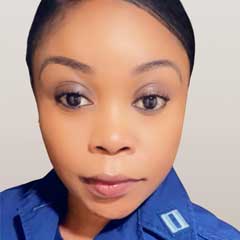
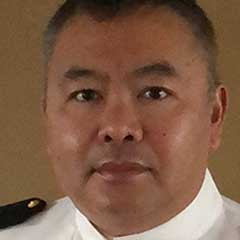


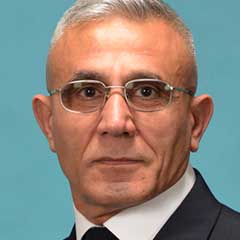
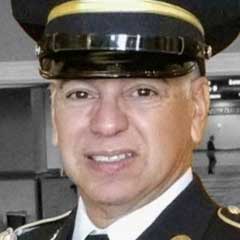
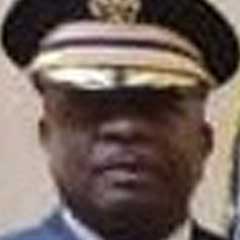
An AARC tradition like no other, attend the AARC Flag Folding Ceremony and celebrate the rich tradition of the U.S. Military and Armed Forces. RT veterans and active-duty respiratory therapists, Joe Buhain, EdD, MBA, RRT, FAARC, Michael de Peralta, MBA-HCM, RRT, RCP, Harry Roman, MA, RRT, FAARC, Wadie Williams, MS, RRT, FAARC conduct a moving ceremony as we recognize those who serve, those who have served, and those we have lost.
2:00 p.m.–2:50 p.m. | Tangerine Ballroom | Adult Acute Care
4th Robert M. Kacmarek Scientific Memorial Lecture
Polio, Pandemics and the Birth of Intensive Care
Hannah Wunsch, MD, MSc
Show description

The COVID-19 pandemic presented unprecedented challenges in intensive care, mechanical ventilation and respiratory care. However, the genesis for intensive care can be traced to the polio epidemic in Copenhagen in 1952. With only a handful of negative pressure ventilators the team at Blegdam hospital turned to a relatively unknown anesthetist, Bjorn Ibsen, who introduced tracheostomy and positive pressure ventilation as the preferred treatment. Students hand ventilated patients for days and the mortality rate plummeted. Dr. Wunsch has exquisitely detailed this story in her book entitled, The Autumn Ghost. The story is fascinating, includes personal stories of the physicians and patients as well as the amazing success of a team of individuals dedicated to solving an unsolvable problem.
Sponsored by Nihon Kohden and Dr. Honglin Du
3:00 p.m.–3:35 p.m. | Ballroom WF4 | Adult Acute Care
Pressure Support Should Not Be Used During Spontaneous Breathing Trials
CON: Thomas Piraino, RRT, FCSRT, FAARC
PRO: Karsten Roberts, MSc, RRT, RRT-ACCS, FAARC
Show description


This debate will explore the utilization of Pressure Support Ventilation (PSV) compared to not using it during spontaneous breathing trials. The presenters will highlight the literature that supports the use of PSV, noting benefits like enhanced patient comfort and decreased work of breathing, against potential disadvantages, such as the risk of over-assistance and prolonged weaning times. Additionally, patient outcomes and criteria for weaning readiness from mechanical ventilation will be discussed.
3:00 p.m.–3:35 p.m. | Room 224A | Ethics
Ethical Dilemmas in a Respiratory Acute Care Unit: Conversations with RTs
Julie Clements, BA, RRT
Lexi Emerson-Gervais, RRT
Christopher Piccuito, MSEd, RRT, RRT-NPS, RRT-ACCS
Show description


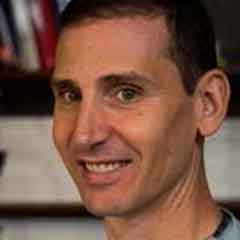
The Respiratory Care Unit patient population consists of chronically critically ill patients, as well as newly diagnosed neuromuscular and traumatic brain injured patients. All the patients are tracheostomized and are admitted to the unit on a ventilator. The goal is to liberate or adjust ventilator settings as appropriate. Occasionally, there is a discrepancy about the treatment plan and goals between the clinical team and the patient's family. Respiratory Therapists work collaboratively with social workers, physicians and nurse ethicists to create a multidisciplinary approach to navigating goals of care. In this panel discussion, panelists will address case study scenarios that reflect ethical considerations made by the team when there is a discrepancy between the team, patient and family regarding plan of care.
3:00 p.m.–3:35 p.m. | Room 224C | Leadership & Management
Growing your Team with a Career Ladder
Linda Napoli, MBA, RRT, RRT-NPS, RPFT
Dana Stauffer, MS, RRT, RRT-NPS
Jennifer Watts, MSc, RRT, RRT-NPS, C-NPT, FAARC
Show description

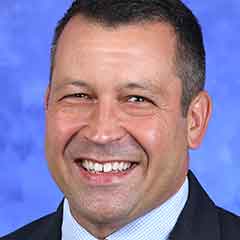
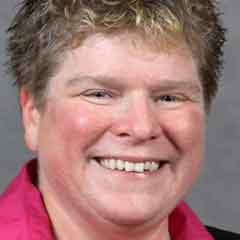
This panel presentation will discuss the value of implementing a clinical ladder and provide examples of successful programs at various organizations across the county. Attendees will leave with practical tips to enhance or create their own clinical ladder programs and allow horizontal growth for their team members.
3:00 p.m.–3:35 p.m. | Ballroom WF3 | Neonatal/Pediatrics
RT-Driven Ventilator Liberation in the PICU
Jeremy Loberger, MD
Show description
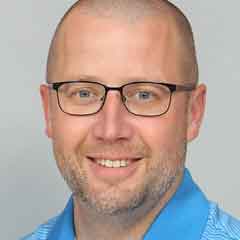
Liberation from mechanical ventilation in children is crucial to minimize morbidity in the PICU. Pediatric ventilator liberation guidelines have been established and existing gaps in the evidence identified. Strategies for adoption and implementation will be discussed and current data presented.
3:00 p.m.–5:05 p.m.
Symposium
Clinical Practice Guidelines (CPG)
3:00 p.m.–3:35 p.m. | Room 240B | Patient Safety
Pediatric Critical Asthma and O2 Therapy: Transition from Hospital - Home
Michael Hess, MPH, RRT, RPFT
Andrew Miller, MSc, FAARC, FCCM
Show description
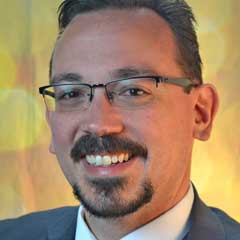
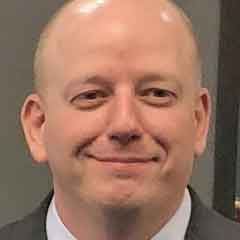
This presentation will review the new CPGs that pertain to pediatric critical asthma and oxygen therapy when transitioning from hospital to home. The recommendations made, and the level of evidence for the recommendations will be discussed.
3:45 p.m.–4:20 p.m. | Room 240B | Adult Acute Care
Pulse Oximetry and Noninvasive Ventilation
Maria Madden, RRT, RRT-ACCS
Jacklyn Grimball, RRT, AE-C, FAARC
Show description
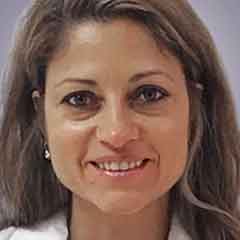

This presentation will review the new CPGs that pertain to pulse oximetry and noninvasive ventilation. The recommendations made, and the level of evidence for the recommendations will be discussed.
4:30 p.m.–5:05 p.m. | Room 240B | Adult Acute Care
Patient-Ventilator Assessments and Spontaneous Breathing Trials
Lynda Goodfellow, EdD, RRT, FAARC
Karsten Roberts, MSc, RRT, RRT-ACCS, FAARC
Show description


This presentation will review the new CPGs that pertain to patient-ventilator assessments and spontaneous breathing trials. The recommendations made, and the level of evidence for the recommendations will be discussed.
3:10 p.m.–5:05 p.m. | Room 230A | Clinical Practice
Open Forum Walk Rounds #4
Show description
Researchers present the results of their work. Authors briefly present their findings and engage in an open discussion with the attendees.
Supported by an unrestricted educational grant from
3:10 p.m.–5:05 p.m. | Room 230C | Clinical Practice
Open Forum Walk Rounds #5
Show description
Researchers present the results of their work. Authors briefly present their findings and engage in an open discussion with the attendees.
Supported by an unrestricted educational grant from
3:45 p.m.–4:20 p.m. | Ballroom WF4 | Adult Acute Care
Aerosol Delivery During Mechanical Ventilation: Exploring Recent Advances
Jie Li, PhD, RRT, RRT-ACCS, RRT-NPS, FAARC, FCCM
Show description

Aerosol delivery during mechanical ventilation is complex and has been shaped by numerous factors. Clinicians and researchers have worked diligently to improve aerosol delivery, focusing on the types and placements of aerosol generators, the effects of humidification, and the influence of ventilator settings. Recent in vitro and clinical studies have shown varied results regarding the role of humidification and ventilator settings on aerosol delivery. This presentation will delve into these recent findings, discussing the implications of the latest consensus and aiming to enhance understanding of optimizing aerosol delivery in mechanical ventilation based on current evidence.
3:45 p.m.–4:20 p.m. | Room 224A | Leadership & Management
Strategies to Reduce Respiratory Device-Related Pressure Injuries
Sarah Bazelak, MSc, RRT, RRT-ACCS, AE-C
Show description

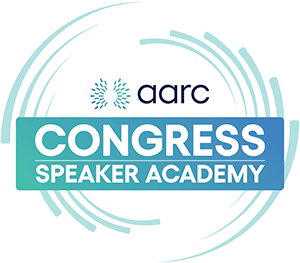
This presentation will provide an overview of pressure injuries, risk factors to potentiate skin integrity concerns, and strategies that all RTs can employ to reduce skin impact from respiratory devices. In the ever-changing healthcare environment this is increasingly important for patient safety, value-based care models, and CMS reimbursement.
3:45 p.m.–4:20 p.m. | Room 224C | Leadership & Management
Framing Employee Retention from a Systems Thinking Approach
Jerin Juby, DMgt, RRT
Show description
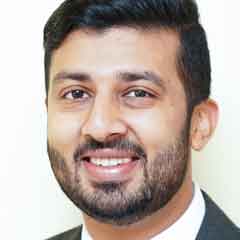
Retention of respiratory therapists has been a challenging issue within healthcare. Current and prevailing approaches and strategies for staff retention are analytical and linear. In this presentation, the challenge of respiratory therapy staff retention is formulated as a complex systems problem and identifies differences in understanding that emerge compared to the prevailing analytic approach of problem formulation.
3:45 p.m.–4:20 p.m. | Ballroom WF3 | Neonatal/Pediatrics
Predicting Difficult Intubation and Post-Extubation Stridor with POCUS
Luke Burton, MD
Show description

Airway management is a critical aspect of patient care in the PICU. Utilizing Point-of-Care Ultrasound (POCUS) to perform immediate airway assessment is feasible in pediatric patients. Traditional methods for evaluating airway anatomy and predicting complications during intubation and post-extubation have limitations and yield mixed results. Airway POCUS is a non-invasive approach to assessing anatomy, identifying challenges, and predicting difficult intubation and those at risk for post-extubation stridor.
4:30 p.m.–5:05 p.m. | Ballroom WF4 | Clinical Practice
The Gift of Life: Exploring the World of Donor Organ Procurement
Jessica Foreman-Starks, MSRC, RRT
Show description
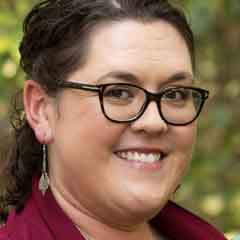

Organ procurement coordination is a highly rewarding but often unknown subspecialty of respiratory care, even though the unique expertise of respiratory therapists makes them especially qualified to excel in this role. Through an RT’s deep understanding of the cardiopulmonary system and its impact on other organ systems, RTs have the potential to greatly improve rates of successful transplantation of not only lungs but all organs. This lecture aims to introduce RTs to the specialized world of donor organ procurement, and the multiple potential roles of the RT in this process.
4:30 p.m.–5:05 p.m. | Room 224C | Leadership & Management
Supporting Neurodiverse Colleagues, Staff and Patients
Gabrielle Davis, MPH, MA, RRT, RRT-NPS, RRT-ACCS, TTS, LPC, NCC
Show description

Discussions surrounding neurodiversity have gained momentum in recent years, despite the longstanding existence of this diverse population. This session is designed to introduce respiratory therapists and leaders to innovative concepts, shedding light on unfamiliar aspects. It will explore strategies for dismantling barriers and creating opportunities, fostering a framework for delivering affirming and equitable care.
4:30 p.m.–5:05 p.m. | Ballroom WF3 | Neonatal/Pediatrics
Spontaneous Breathing Trials in Neo/Peds
Ira Cheifetz, MD, FAARC
Jeremy Loberger, MD
Julia Krzyzewski RRT, RRT-NPS
Show description



Spontaneous breath trials (SBTs) have become a standard in the adult ICU; however, neonatal/pediatrics patients do not always follow the same guidelines as adults. This panel will discuss the implications of SBTs to assess extubation readiness in their respective ICUs: PICU vs. CICU vs. NICU and considerations unique to each patient population.
4:30 p.m.–5:05 p.m. | Room 224A | Patient Safety
The High Cost of Disruptive Behaviors in Healthcare & The Collateral Damage
Kevin McQueen, MHA, RRT, RRT-ACCS, CPPS, FAARC
Show description

The presentation will outline the different types of disruptive behaviors, who commonly display the behaviors, and contributing factors. The discussion will also provide suggestions on how to deal with disruptive behavior being done by healthcare workers within an institution. Disruptive behaviors remain one of the most difficult issues facing healthcare organizations. Failure to properly address the actions by a small few can severely impact an organization's patient safety, staff morale, and employee turnover.
6:00 p.m.–9:00 p.m. | Tangerine Ballroom | General
Annual Sputum Bowl Finals
Show description
Since 1978, the Sputum Bowl has been a cornerstone of our annual Congress meetings. Join us to witness teams from across the U.S. vie for the prestigious prize and the ultimate bragging rights. It’s a thrilling event to both participate in and witness!

There are no sessions that match your display preferences.

